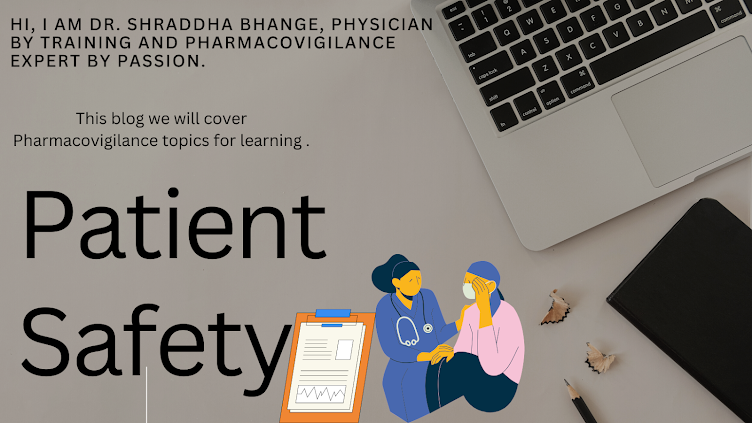What are the benefits and risks?
Benefits are clinically meaningful improvements to a patient, health state, or quality of life.
The risk can encompass a variety of factors, including the absence of expected benefits, potential dangers or hazards to the patient, adverse events, both direct and indirect harm, and the frequency and severity of side effects. It also extends to harm caused to non-patients or the general public, unacceptable damage to the patient, and the loss in efficacy compared to current therapies. Additionally, risks may include the negative aspects of a drug, pharmacokinetic interactions, insufficient treatment duration, the probability of adverse events or harm, negative impacts on the patient’s quality of life, failure to meet clinical endpoints, and drug intolerability.
The integrated benefit-risk evaluation should be performed for all authorized indications and should incorporate the evaluation of risks in all use of the medicinal product (including use in unauthorized indications).
Benefit-risk assessment: why is it needed?
Ø Simplifies product understanding
Ø Easy to utilize in multiple documents
Ø Makes an impact
Ø Adds credibility
What are the components of B-R?
Ø How does the disease impact patient population
Ø How does the disease impact patients' quality of life
Ø What are the current treatment options, and are they
meeting the patients
Expectations?
Ø What are the key benefits, and how do they impact the
patient's functions, quality, and survival?
Ø How these benefits provide clinically meaningful
benefits in the patient population and a subset of the population
Ø Risks
Ø What are the known risks, and how are they quantified
(reversibility, treatability, and Preventability)
Ø What are unknown risks, and how may they change in a
marketing scenario if approved
Ø Are there any more risk minimization measures required
beyond labeling?
Ø If yes what are those and how they can be addressed
with meaningful risk minimization strategy
Which documents need a B-R assessment?
1. PSUR/PBRER
2.RMP
3. Clinical modules as a part of MA application
4. Ongoing evaluations for any documents that require an understanding of product performance in terms of risks and benefits.
How to draft a B-R assessment?
- Current understanding of disease indication (
epidemiology, pathophysiology, complications, prognosis, impact on
patients' quality of life mortality and morbidity, incidence, duration, and
impact on public health)
- Current therapies: Available options with details of availability, access, affordability, benefits, risks, tolerability,
convenience, and preference in the patient populations, subpopulations and
also noting any regional differences
Ø Benefits: Clinical importance of the benefit (impact
on patient's clinical conditions and disease ), the time course of benefits ( time
to onset, continuous effect of product), variability of key benefits (age, sex,
ethnic origins etc)
Ø Risks: Risks are adverse events or unfavorable events should be considered especially in terms of their occurrence in study drug vs placebo, comparator etc (in percentage), reversibility, tolerability, preventability, seriousness and severity. Describe the ability to manage, prevent or treat risks and also describe variability factors (age, sex, concurrent therapies)
Written by:
Dr.Shraddha Bhange.
Connect with me Via the comments below. (I do not respond to Facebook messages)
Support the cause of better rural education with me: ThinkSharp Foundation http://thinksharpfoundation.org/#home
References:
Ø EMA- ICH Topic E2C(R1), PSUR
Ø International Conference on Harmonisation. ICH
Harmonised Tripartite Guideline, Periodic Benefit-Risk Evaluation Report
(PBRER) E2C (R2), 2012. http://www.ich.org/fileadmin/Public_
Web_Site/ICH_Products/Guidelines/Efficacy/E2C/E2C_R2_ Step4.pdf. Accessed
August 11, 2015
Ø European Medicines Agency (EMA). Guideline on good
pharmacovigilance practices (GVP) Module VII – Periodic safety update report
(Rev 1). 2013. http://www.ema.europa.eu/docs/en_GB/
document_library/Scientific_guideline/2013/04/WC500142468.pdf. Accessed August
11, 2015.
Ø International Conference on Harmonisation. E2C(R2)
Implementation Working Group ICH E2C(R2) Guideline: Periodic Benefit-Risk
Evaluation Report Questions & Answers, 2014.
http://www.ich.org/fileadmin/Public_Web_Site/ICH_Products/
Guidelines/Efficacy/E2C/E2C_R2_QAs_Step4.pdf. Accessed August 11, 2015.
Ø European Medicines Agency (EMA). Benefit-risk
methodology project. Work package 1 report: description of the current practice
of benefit-risk assessment for centralised procedure products in the EU
regulatory network. London: EMA; 2009. http://www. ema.europa.eu/docs/en_GB/document_library/Report/2011/07/
WC500109478.pdf. Accessed August 11, 2015.
Ø European Medicines Agency (EMA). Benefit-risk
methodology project. Work package 4 report: benefit-risk tools and processes.
London: EMA; 2012. http://www.ema.europa.eu/docs/en_GB/
document_library/Report/2012/03/WC500123819.pdf. Accessed August 11, 2015.
Ø Food and Drug Administration (FDA). Structured
approach to benefit-risk assessment in drug regulatory decision-making. http://
www.fda.gov/downloads/ForIndustry/UserFees/PrescriptionDrug
UserFee/UCM329758.pdf. Published 2013. Accessed August 11, 2015.
Ø Coplan PM, Noel RA, Levitan BS, Ferguson J, Mussen F.
Development of a framework for enhancing the transparency, reproducibility, and
communication of the benefit–risk balance of medicines. Clin Pharmacol Ther.
2011;89:312-315
Ø European Medicines Agency (EMA). Benefit-risk
methodology project. Work package 4 report: benefit-risk tools and processes.



